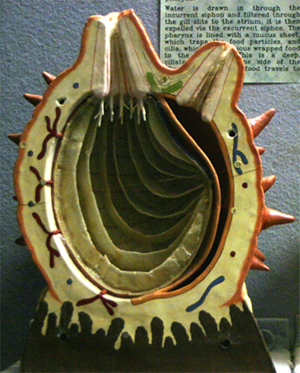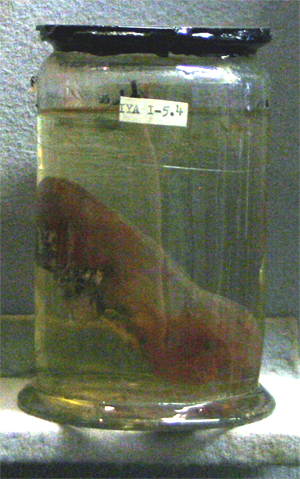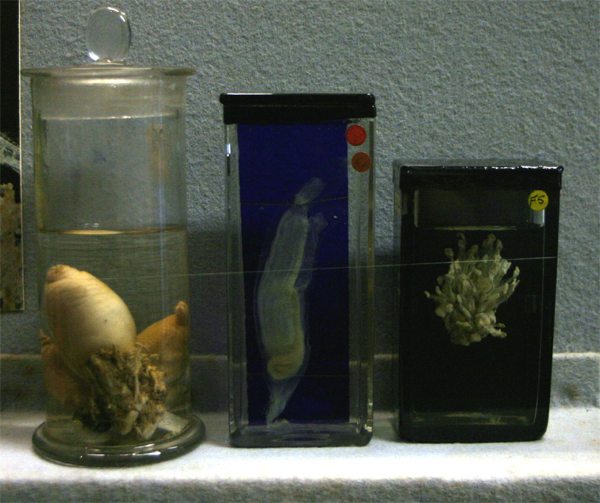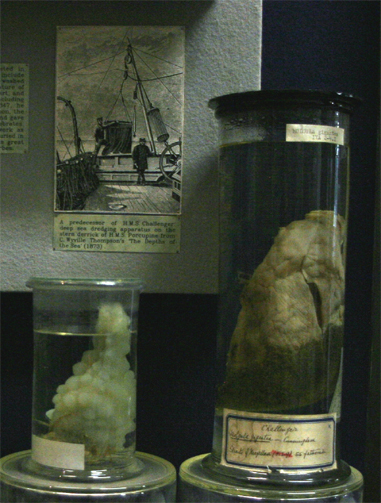
CLASS ASCIDIACEA | |
| The structure of this class is shown by this model of a species of Styela. A typical adult ascidican or sea-squirt is enclosed in a transparent tunic. Its only resemblance to other chordates is its large pharynx perforated with gill slits and used for feeding. Water is drawn in through the incurrent siphon and filtered through the gill slits to the atrium. It is expelled via the excurrent siphon. The pharynx is lined with a mucus sheet, which traps the food particles, and cilia, which carry the mucus-wrapped food to the endostyle. The endostyle is a deep ciliated groove on one side of the pharnyx along which food travels to the intestine. Oxygen is absorbed from the water as it passes through the pharynx.
Larval sea-squirts are free-swimming and tadpole-like with a segmented notochord and segmented muscles both lacking in adults. They also possess a large adhesive gland for attachment to the substrate. Once attached they metamorphose into the sac-like adults. |
 |
Injected sea-squirtThe circulatory system of adult sea-squirts is revealed in a specimen injected more than a 100 years ago by John Goodsir (1814- 1867), a pioneer in the techniques of preparing anatomical specimens for study and display. Before becoming Professor of Anatomy (1846 – 1867), Goodsir spent several years (1841- 1846) as conservator of the Museum of the Royal College of Surgeons, Edinburgh preparing anatomical specimens for teaching. Goodsir was not only interested in human anatomy: his writings include descriptions of a Short Sunfish washed ashore at Rosyth, the musculature of the elephant, the reptilean heart and a variety of invertebrates including Amphioxus. In 1847 he even stood in for Robert Jameson, the then Professor of Natural History, and gave a series of lectures on invertebrates. He died in 1867, as much from overwork as from poor health, and was buried in Dean Cemetery, Edinburgh next to Edward Forbes, his great friend and colleague. |
 |
Two simple solitary ascidians (Cynthia papilosa, Ciona interstinalis) and a colonial seasquirt, Clavelina lepadiformes, the lignt bulb sea squirt.
Phallusia mammillata , the largest British species, and Molgula gigantaea dredged from 55 fathoms in the Straits of Magellan by the Challenger Expedition.
|
|








